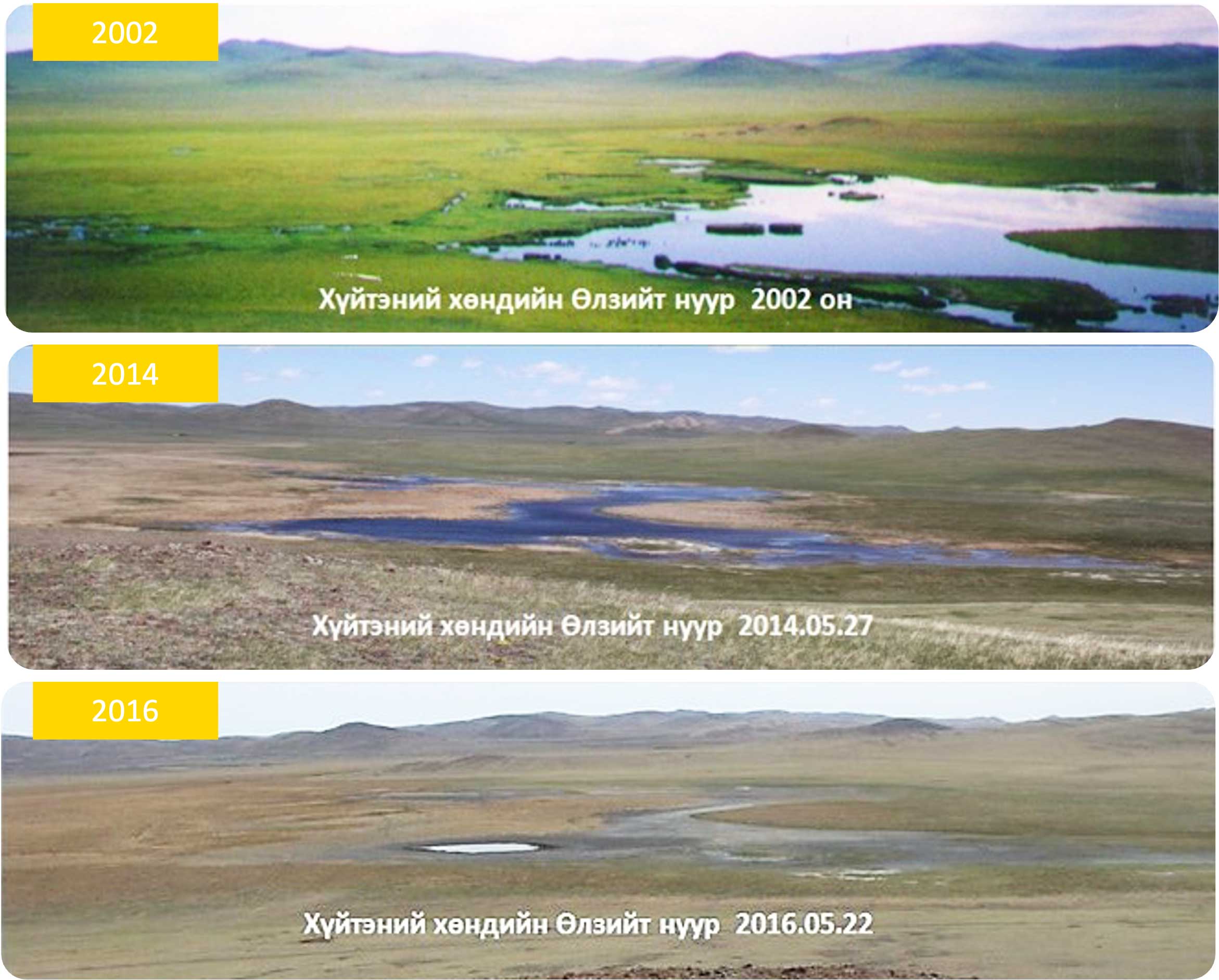Why is the White-naped crane population declining?
Wetlands play a crucial role in supporting wildlife and providing essential ecosystem services. However, these habitats are degrading rapidly especially in northeast Mongolia where our focal species, the White-naped cranes, breed.
 Ulziit lake in Khuiten valley, northeastern Mongolia, where pairs of White-naped crane used to nest, has dried out over the last two decades (photo by N.Tseveenmyadag).
Ulziit lake in Khuiten valley, northeastern Mongolia, where pairs of White-naped crane used to nest, has dried out over the last two decades (photo by N.Tseveenmyadag).
While climate change is a primary driver of wetland degradation the few remaining habitats face an additional threat – the increasing presence of livestock. This added pressure significantly contributes to further degradation, impacting the White-naped cranes. Consequently, fewer pairs of White-naped cranes attempt to lay their eggs in these diminishing nesting sites characterized by poor food availability and inadequate nest protection.
Historically, White-naped cranes build their nests among islands of aquatic plants, such as reeds, to hide their nest from potential dangers. However, encountering nests on nearly dried wetlands or barren pond islands has become more common. This vulnerability, for instance to predation and trampling, leads to a higher rate of failed breeding attempts. Our study comprehensively illustrates these intricate relationships, providing a clear explanation for the overall decline in the White-naped crane population.
